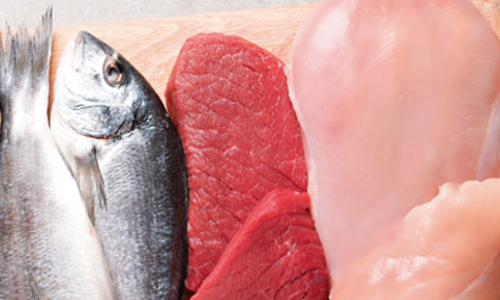Practice Scenario

Meet TEDDY
A 4-month-old, male, Great Dane puppy
- Teddy is presented today for his final puppyhood vaccinations.
- When asked about Teddy's diet, his owner said Teddy eats a complete and balanced food that the breeder provided. Since the food is nearly gone, the owner wants to provide Teddy with a "more natural diet."
- Teddy’s owner plans to feed a grain-free dog food, possibly one that is also raw. The owner eats a gluten-free diet and feels "much healthier." Teddy’s owner wants a long, healthy life for Teddy, too.
- The owner also asks if Teddy needs a calcium supplement. His sire is a large, heavy dog; the owner believes Teddy will be similar in size and weight.
Feeding Philosophies
Considerations When Feeding Raw Pet Food Diets
Although raw meat diets are popular among some pet owners, there is no scientific evidence that they provide any specific health benefits other than being highly digestible. In fact, raw pet food diets may present several major health risks.

Key Messages
- Raw meats, poultry and fish, including those intended for human consumption, can be contaminated with disease-causing bacteria such as Salmonella or E. coli. These bacteria can be harmful to the pet, and the human members of the family could also be at risk. Studies show that household levels of these disease-causing bacteria are higher when pets are fed raw foods rather than regular commercial pet foods.
- Bones present in raw food diets may also harm the pet, potentially resulting in teeth or mouth injuries, choking, and gastrointestinal obstruction or perforation.
- Commercially available diets marketed as “complete” raw diets can provide the correct balance of nutrients for a dog or cat, but many do not. Home-prepared raw food diets may also not provide
complete and balanced nutrition. The effects of feeding a nutritionally imbalanced diet are not always immediately evident, but the consequences can be lifelong for the pet including stunted growth and reproductive problems.

"If you’re considering feeding homemade or commercial raw diets, we recommend that you first consult with a boarded specialist in veterinary nutrition for guidance. While your pet may enjoy eating raw pet food and it may have some benefits, there are several health considerations for your pet and your family that you should know about."
To Share With Pet Owner:
Raw Food Diets
Raw food diets are popular with pet owners but the nutritional benefits are unproven, and most are unaware of the health risks that raw food can pose to pets — and people.
Additional Resources
Freeman, L. M., Chandler, M. L., Hamper, B. A., & Weeth, L. P. (2013). Current knowledge about the risks and benefits of raw meat-based diets for dogs and cats. Journal of the American Veterinary Medical Association, 243, 1549-1558. doi: 10.2460/javma.243.11.1549
Lenz, J., Joffe, D., Kauffman, M., Zhang, Y., & LeJeune, J. (2009). Perceptions, practices and consequences associated with foodborne pathogens and the feeding of raw meat to dogs. Canadian Veterinary Journal, 50, 637-643.
